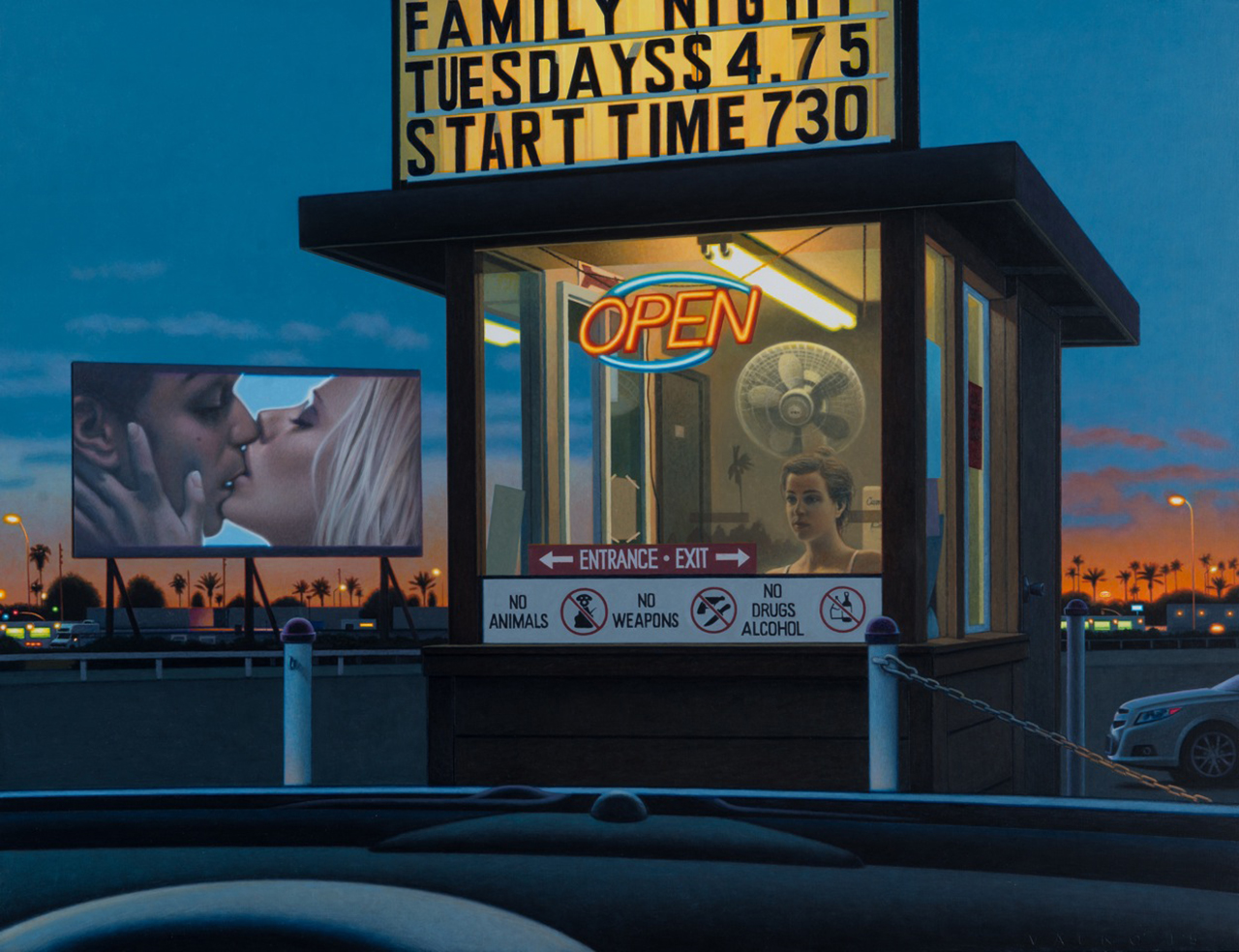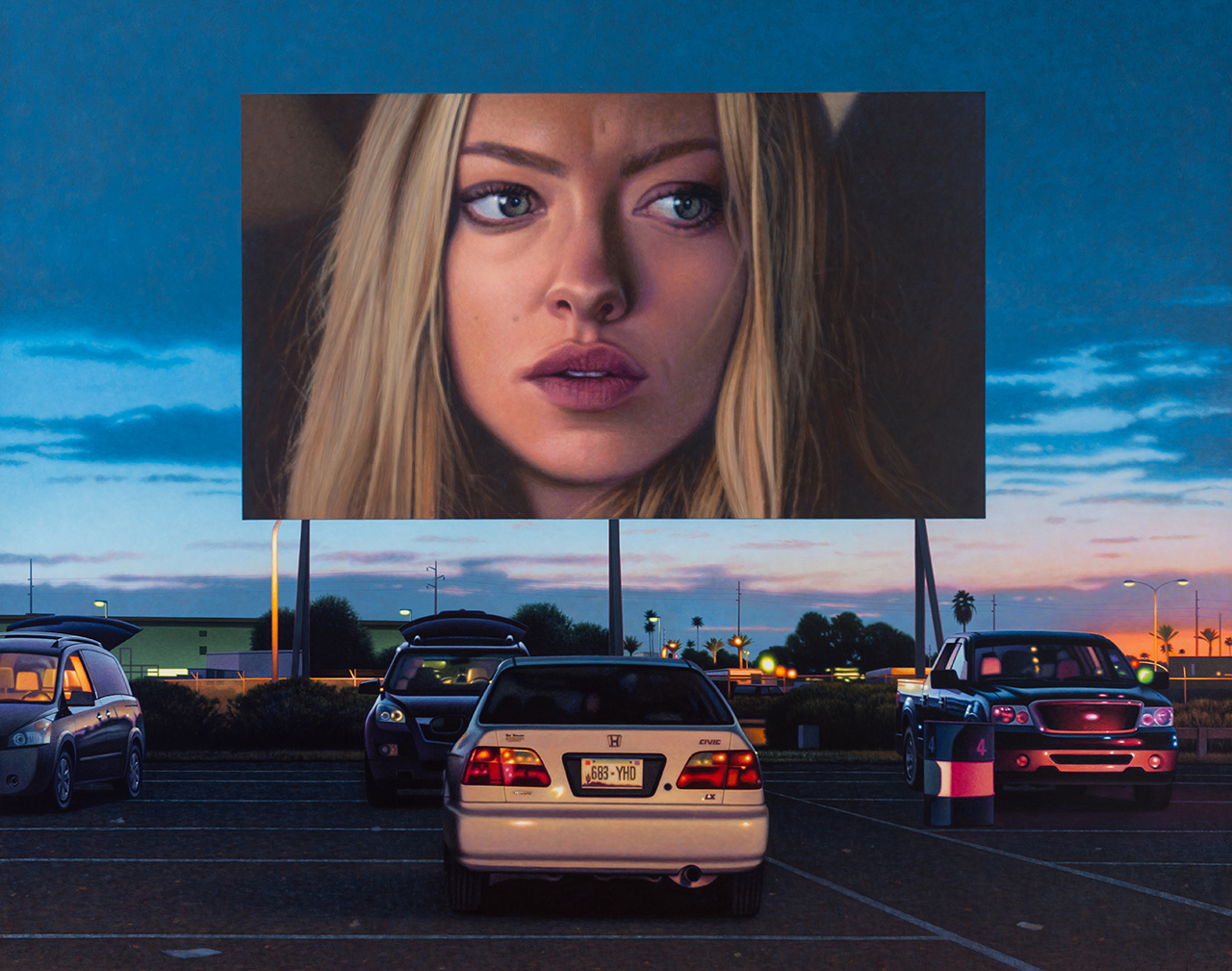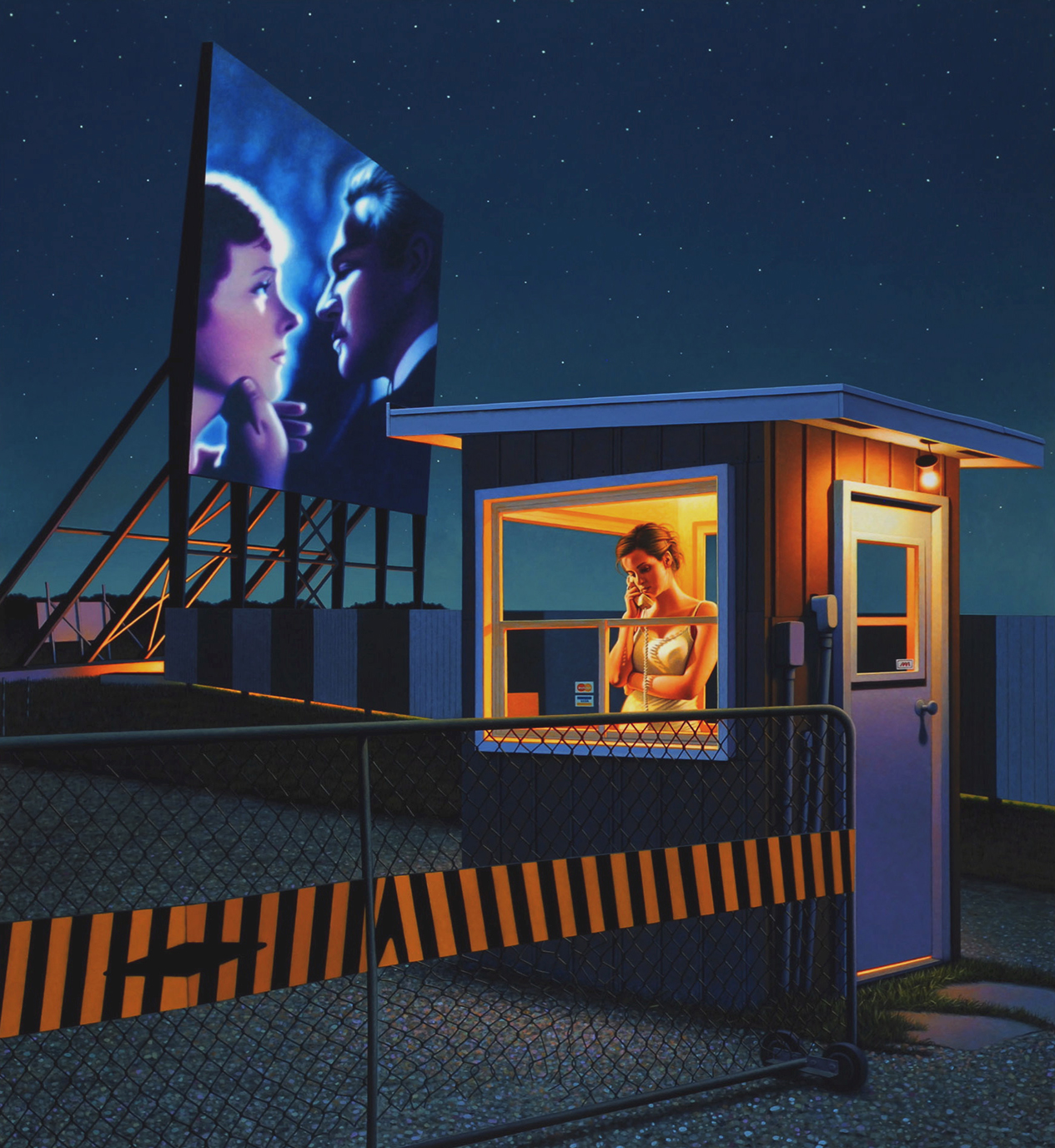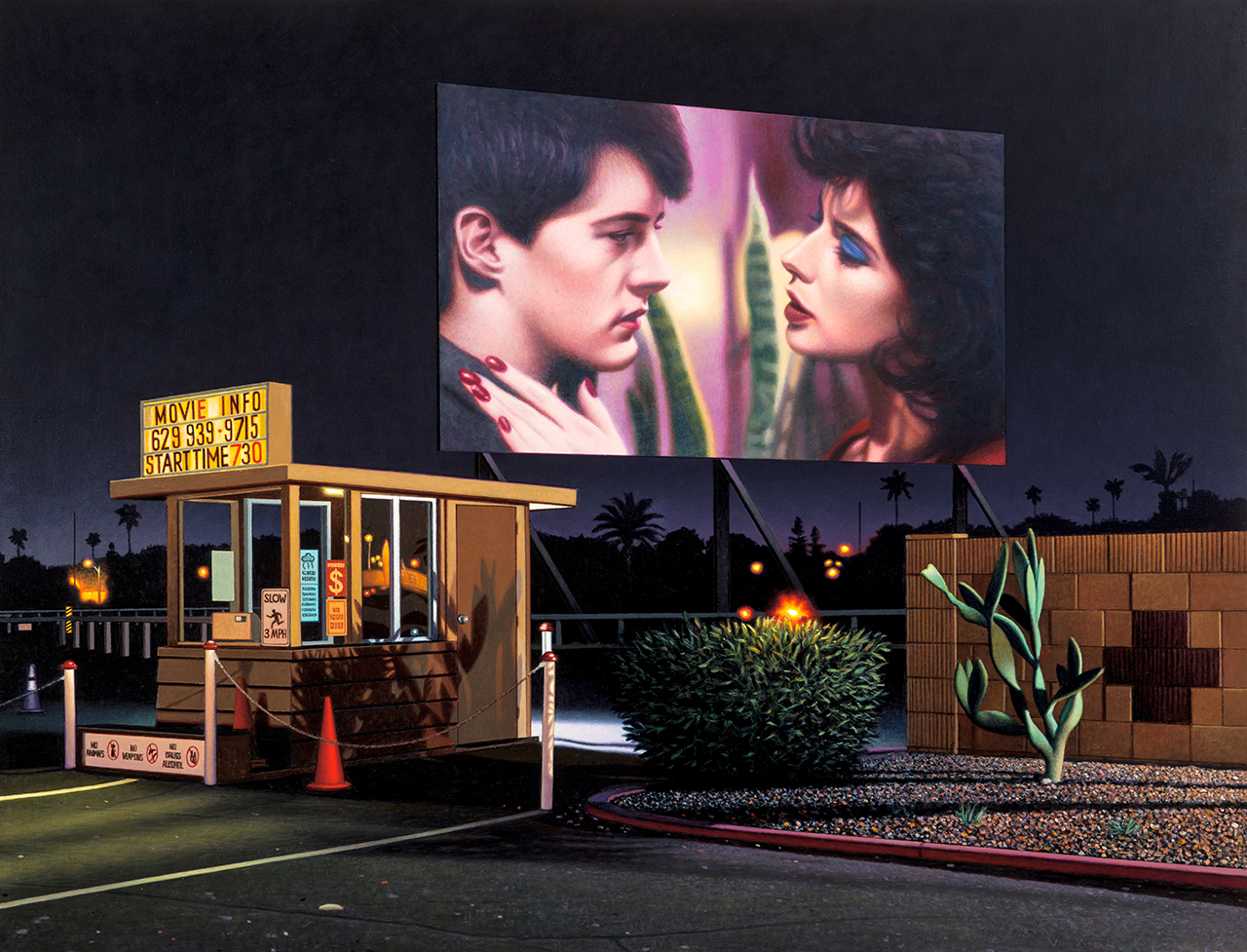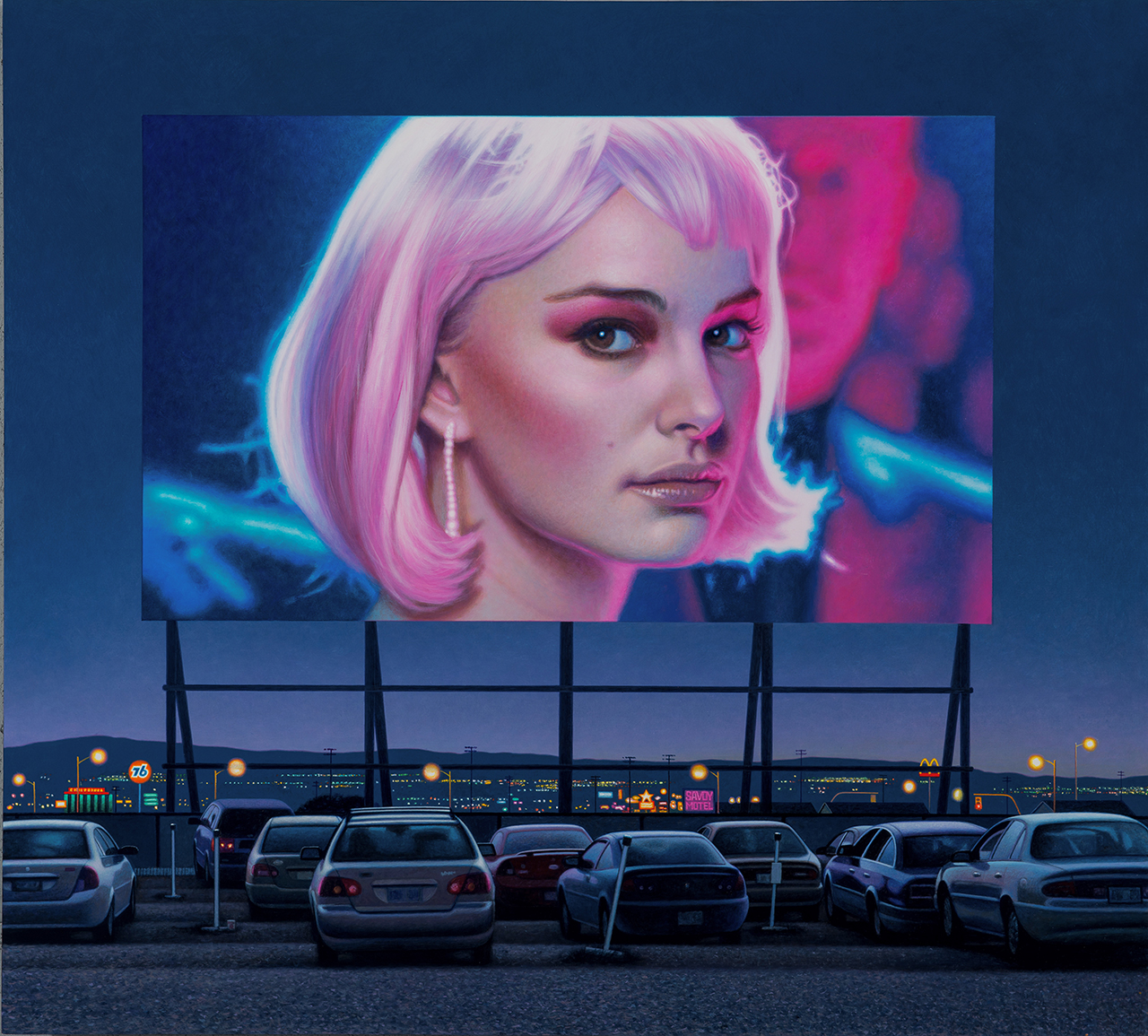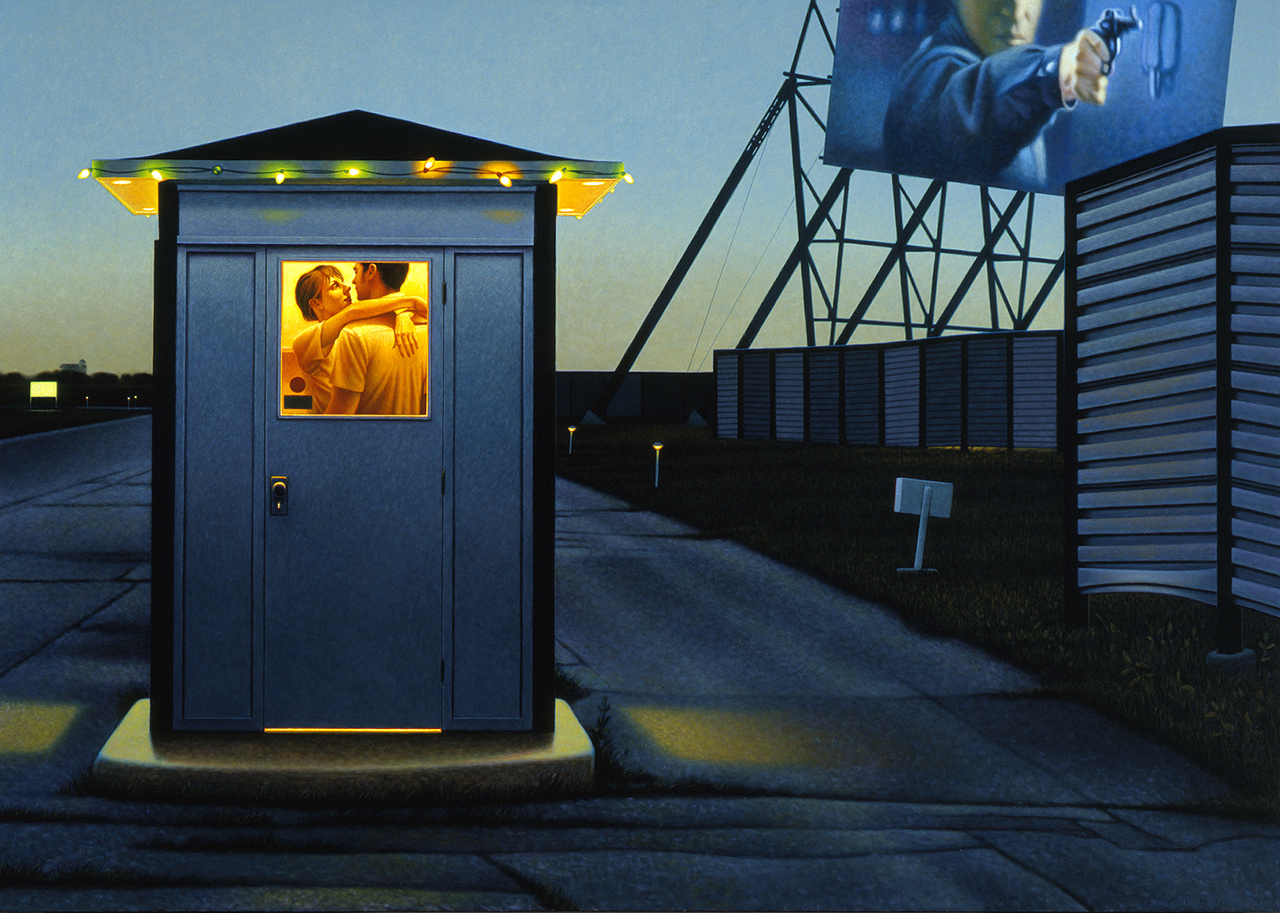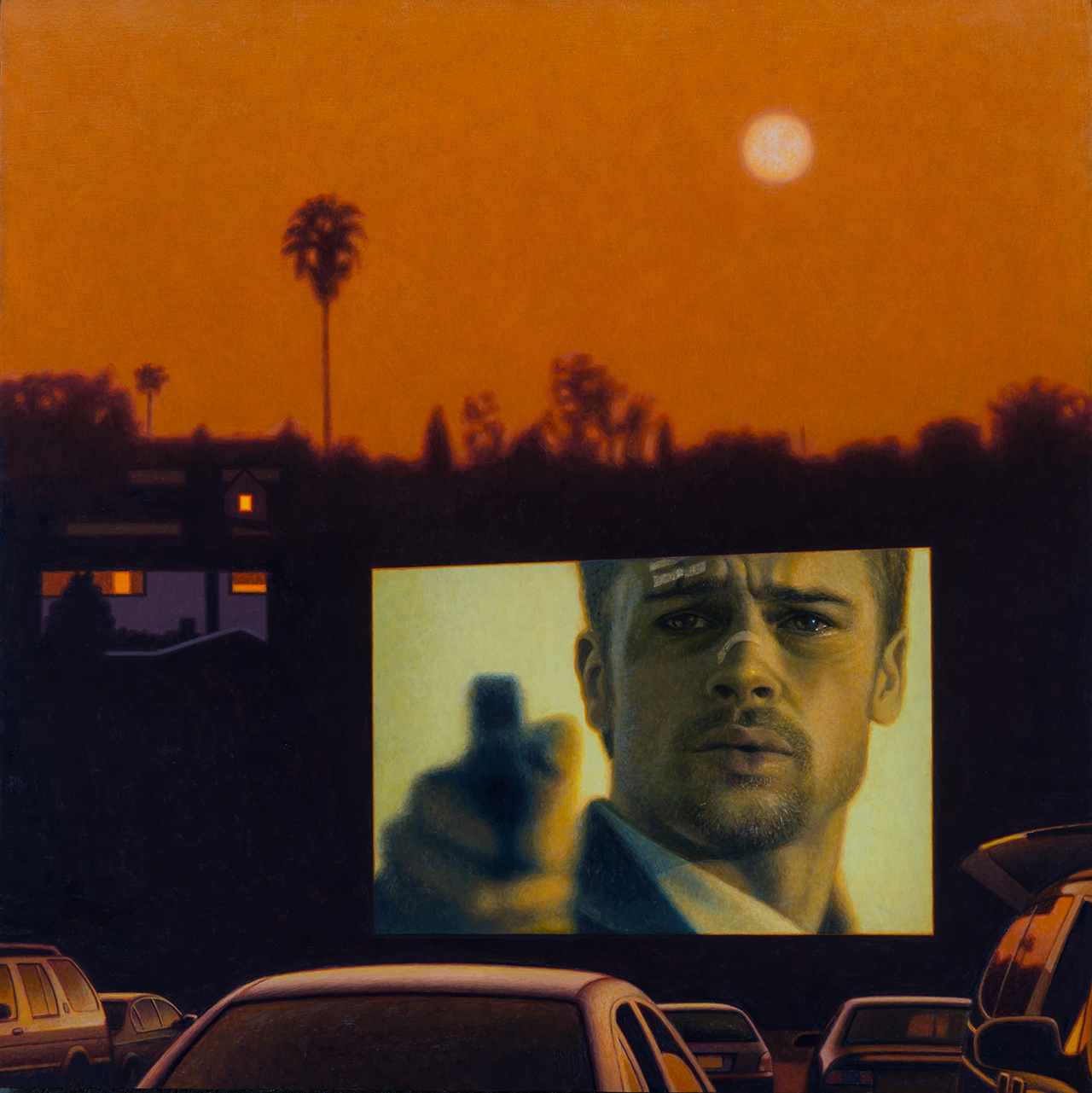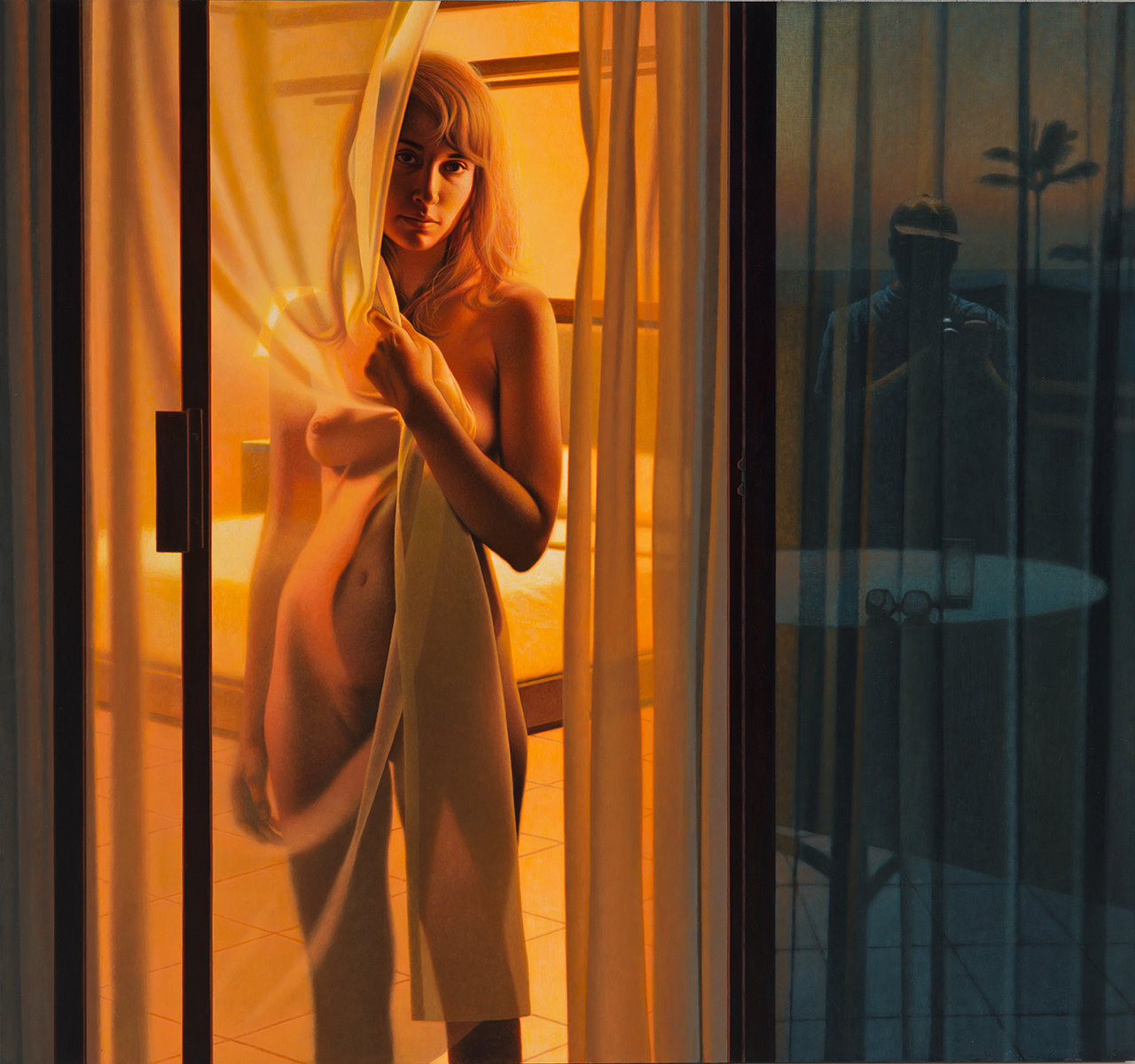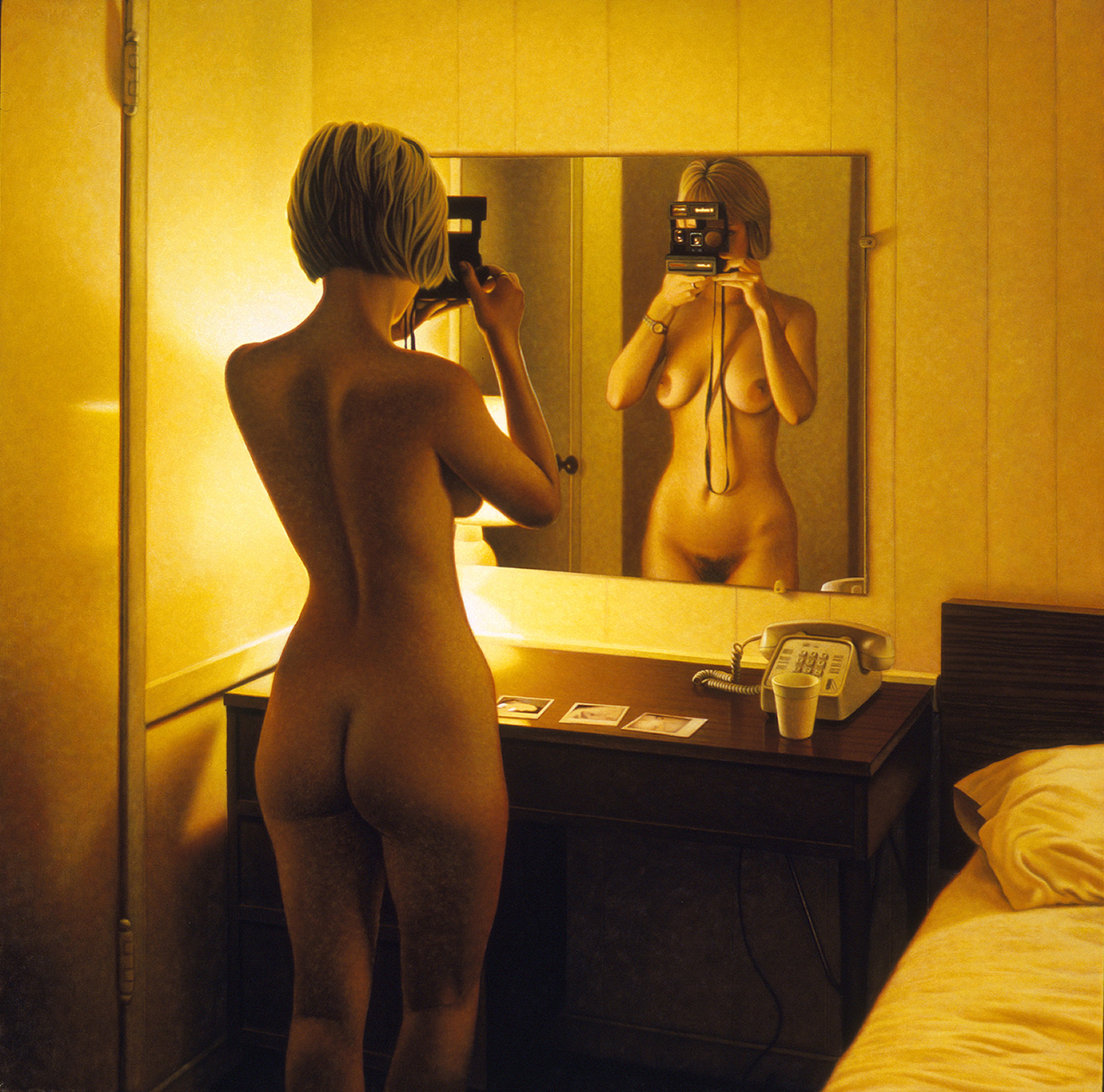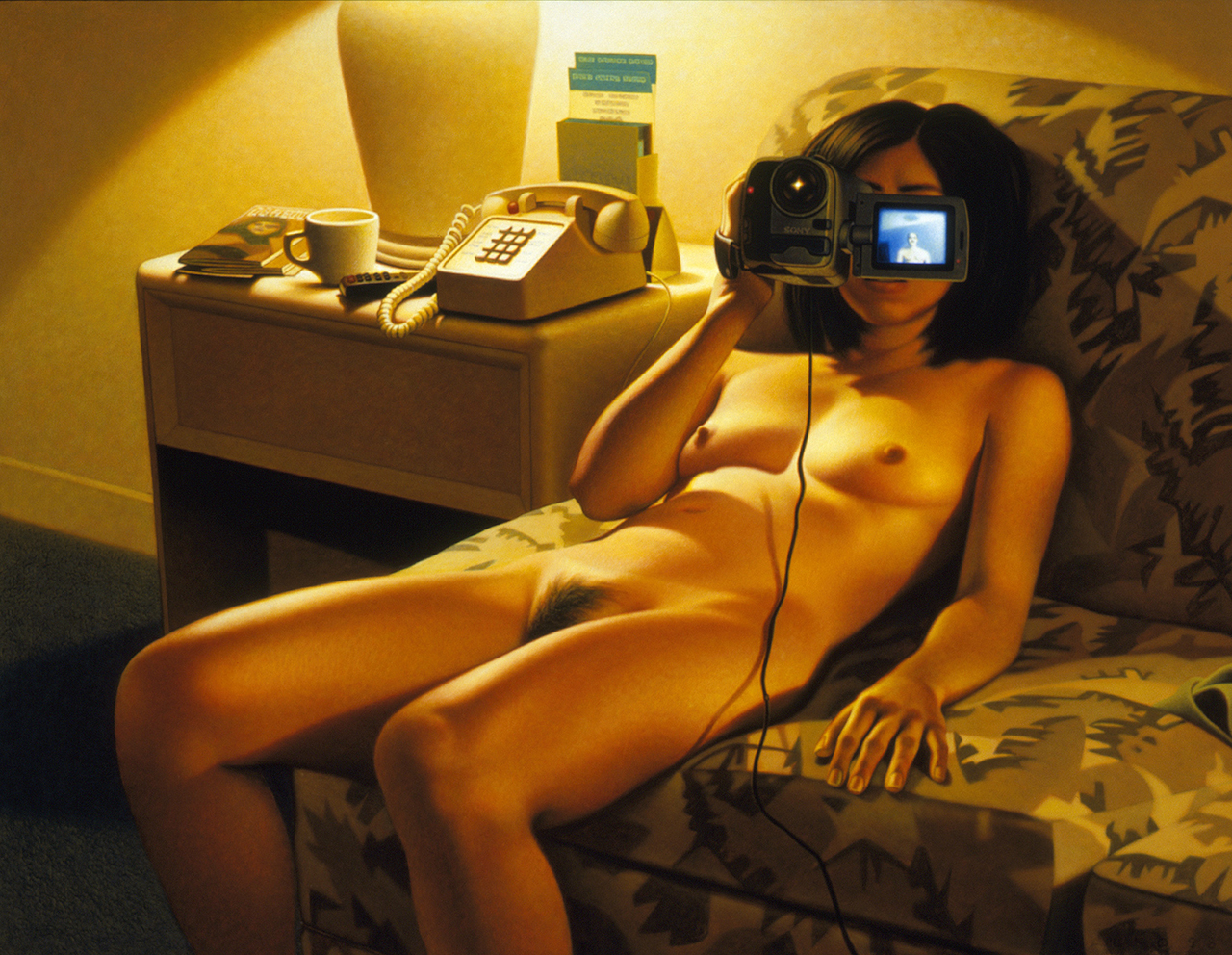#TheMovieIssue
Let's talk
SOAPOPERA MEETS ANDREW VALKO
// // The hyper-realistic parody of the American Dream
AN INTERVIEW BY GIULIA PIVETTA
If the representation of life becomes more authoritative than real life, then talking about film and mise-en-scene results actual more then ever. Among dreams, ideas, ideals – also institutional ones – promoted by the cinema industry, the tale that has taken root and germinated plain to all is the Hollywood one, an explosive mix of hedonism, status symbol and hunger for possession synthesized by America in the the mid of the last century, “The American Way of Life”. A life model almost perfect, the frank language we talk today on social networks. We, antipodes people and cultures, have in common the same gratification in demonstrating of being and having the best, from feelings, from work, exactly as if we were constantly “on silver screen”.
“I got a lawyer and a manager/An agent and a chef/Three nannies, an assistant /And a driver and a jet/A trainer and a butler/And a bodyguard or five/A gardener and a stylist/Do you think I’m satisfied?/American life/I live the american dream/You are the best thing I’ve seen,You are not just a dream”.
But when something breaks and this shining bright illusion sang by Madonna disappears, here is real life claiming her space, and arts reveals itself as most powerful and efficient universal instrument to ask questions and mistrust society’s values. According to Andrew Valko, it is necessary to use the same products: he starts right from the cinema screen, that in an “on the road” version is one of the most authentic representation U.S.A. With a crystal clear and disenchanted look, since more than thirty years, Andrew paints the parody of our times, including the digital technology of which he makes fun with a hyper-realistic paint that reveals itself only at a careful and close look.
Se la rappresentazione della vita diventa una voce più autorevole della vita reale ecco che parlare di film e di messa in scena risulta quanto mai attuale. Tra i sogni, idee, ideali – anche quelli di regime- promossi dall’industria cinematografica, il racconto che ha attecchito e germogliato sotto gli occhi di tutti è quello hollywoodiano, una miscela esplosiva di edonismo, status symbol e sete per il possesso sintetizzata dall’America a metà del secolo scorso, “The American Way of Life”. Un modello di vita pressochè perfetto, la lingua franca che oggi parliamo nei social. Noi, persone e culture agli antipodi, siamo accomunate dallo stesso compiacimento nel dimostrare di essere e avere il massimo, dai sentimenti, al lavoro, proprio come se ci trovassimo costantemente “on silver screen”. “I got a lawyer and a manager/An agent and a chef/Three nannies, an assistant /And a driver and a jet/A trainer and a butler/And a bodyguard or five/A gardener and a stylist/Do you think I’m satisfied?/American life/I live the american dream/You are the best thing I’ve seen,You are not just a dream”. Ma quando qualcosa si rompe e questa splendida illusione cantata da Madonna svanisce, ecco che la vita reale reclama il suo spazio, e l’arte si dimostra lo strumento universale più potente ed efficaci per porre domande e mettere in dubbio i valori della società. Secondo Andrew Valko è necessario usare i suoi stessi prodotti: lui parte proprio dallo schermo del cinema, che nella veste “on the road” è una delle rappresentazioni più autentiche della cultura made in U.S.A. Con uno sguardo lucido e disincantato da oltre trent’anni Andrew dipinge la parodia nei nostri tempi, compresa la tecnologia digitale di cui si prende gioco con una pittura iper-realisitca che si rivela solo solo ad uno sguardo ravvicinato e attento.
GiuliaPivetta. The first and more impressive characteristic of your work is that you portray archetypes of American culture as an external eye would do. In this sense, do you consider yourself North American?
AndrewValko. I came to North America (Canada) from Praga at a young age, and even though I have adjusted to embracing the culture here, I still don’t consider myself 100% North American. This allows me to observe and comment on North American culture from an outsider perspective. I have to point out that there is quite a big difference between Canadians and American values. Canadian values are much more social conscious and inclusive.
GP. You paint iconic American symbols, as swimming-pools, drive-in movie screens, girls & guns, valleys, motels. What do they represent for you? What fascinates you the most about them?
AV. They are the symbols of opulent American culture. They play a role in it. Guns for example… they are obsessed with them. The drive in cinemas represent a sort of nostalgia. Before TV and computers, they were a way to disseminate information or Hollywood culture into all these small towns. The influence of movies on people combined with car culture represent all the aspects of “Americana”, which is made of vehicles, junk-food and film. I don’t feel nostalgic, but it represents a sort of trampoline for my ideas. I am also fascinated by the dual aspect of reality: the real reality and the reality of the screen (which is always a fantasy).
GP. So what’s the differences between depicting a girl in a movie or a girl in real life?
AV. There is no difference between people in movies or real life. They are just characters who support the narrative of the painting. I don’t have any personal feelings for most of the people I depict on a screen or in any other situation. When I start painting I choose the most nostalgic movies as I am interested in showing American culture through film: hero worship, unattainable love. Only subsequently I show people in a distressed situation. I’m more interested in the private aspect of life. I am more interested in privacy now. I mostly imagine that the woman on the screen knows she’s been observed. There’s this aspect of voyeurism in her private life, and she is in this little town and people are watching her. Privacy is another American obsession. They are obsessed by celebrities, like the Kardashians for example, and celebrities are taking advantage of this.
GP. Your subjects summarized a kind of “American Dream” – especially when talking about Hollywood and cinema – something that is really present outside America that still seduce people – the success of the movie “La, La, Land” proves it. But is it something so present also in the country?
AV. The American Dream carries the message that with hard work anyone has the equal opportunity to achieve and be whoever he wants to be. Hollywood often promotes these ideas in movies and other form of entertainment. There are many people out and inside America who choose or want to believe in the American Dream because it offers a great deal of hope and promises. It was a great idea when it entailed conquering the nation, but now, it just fails. Many people in America have realized that the dream isn’t quite true. The idea that you can become anything you want, just doesn’t work for them so they become very disillusioned.
GP. Do you feel related to Norman Rockwell, who depicts the imaginary of the American society?
AV. I believe Norman Rockwell (who by the way was an amazing painter) depicted the optimistic side of America, I think my portrayal is more critical. The images and symbols I use more portray the broken American dream.
GP. So the role of art and artists today is changed compared to the past?
AV. To answer this question properly would require me to write an entire book on this subject. For me a short answer would be that the role of art and artists has remained the same from the beginning of time until now. Art and Artist have always played a crucial role in every aspect on the development of mankind.
GP. Mass media are often present in your work, from the cinema, to the polaroid, to the television. In which way you feel related to them? What role did they have in your education, as a child?
AV. I believe that cinema, TV, cameras, computers and other mass media tools disseminate information that influence peoples believes for better or worth. They are also great tools of escapism and fantasy. Because of my age and the fact that I grew up in a Communist country, I wasn’t exposed to TV until I was quite a bit older. Once I was exposed to TV I feel my experience was the same as anyone else, I believe its the interpretation of what you see that is important.
I have also been exploring, in my work, the relationship between people and today’s technology and how the use of computers, digital cameras, camcorders, and cell phones has changed the way people communicate with each other and how they look at themselves and the world around them. And how technology today plays a role in private intimate and sexual moments in peoples lives and how we have all become participants in the deliberate vagueness between being welcome participants or uninvited and invisible spectators in the drama of this subject.
GP. Images are becomes our language, much more than words. What does it mens to choose to paint in a way that imitate them, in a society who is basically ruled by images? Why did you choose it?
AV. I chose to work in a representational style long time ago, long before the computer and present day technology became part of our lives. I wanted to communicate certain ideas and I found that for me the representational style of painting was the best way to do it. I realize that I am competing today with more images out there than ever before. This realization challenges me to create images that are engaging and have a lasting effect on the viewer.
GP. So today, what still excited you the most about art? What is keeping the sacred flame alive? Is the research phase, the technique, materials, or the act of paint?
AV. I was lucky to know that I wanted to be an artist from a very young age. It was something I needed to do and despite moments of great frustration and struggle I enjoy all aspects of the process I go through to make my work. I have to treat each part of the process equally because everything plays a part in a success of the finished piece.
All images courtesy of Andrew Valko
Special Thanks to Ingrid Melano and Naomi Accardi
Meet Andrew here www.andrewvalko.com
